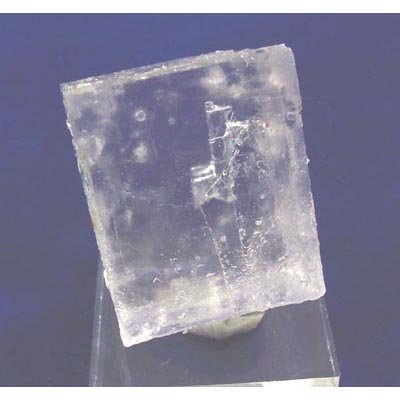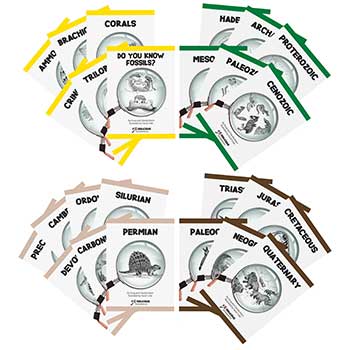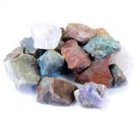Sign up for Lesson Plans, discounts & more!
Sedimentary Rock Classification
How Do You tell One Sedimentary Rock from Another

Sedimentary rock is classified into two groups based on how they form. They are clastic and chemical.
Clastic sedimentary rock is formed as bits of weathered rock become cemented together. Because all kinds of rock are subject to weathering many different minerals can make up this group of rocks. Clays and quartz are the most common.
Chemical sedimentary rocks form when minerals that are dissolved in water become deposited as solids. See miore below.
Classification of clastic sedimentary rocks is done according to the size of the sediments that make up the rock. The following table contains the major groups of clastic sedimentary rocks with their characteristics:
Clastic Sedimentary Rocks |
|||
Name of Rock |
Sediment Type |
Texture |
|
Conglomerate |
gravel - rounded fragments |
course over 2 mm |
|
Breccia |
gravel - angular fragments |
course over 2 mm |
|
Sandstone |
sand |
medium 1/16 to 2mm |
|
Siltstone |
mud |
fine 1/256 to 1/16 mm |
|
Shale |
mud |
very fine less than 1/256 mm |
|

Chemical Sedimentary Rocks |
|||
Name of Rock |
Composition |
Texture |
|
Crystalline Limestone |
Calcite - CaCo3 |
corse to fine Crystalline |
|
Fossiliferous Limestone |
Calcite - CaCo3 |
visible fragments of shells |
|
Chalk |
Calcite - CaCo3 |
microscopic shells and clay |
|
Chert |
Quartz - SiO2 |
very fine crystalline |
|
Gypsum |
Gypsum - CaSO4-2H2O |
fine to course crystalline |
|
Rock Salt |
Halite - NaCl |
fine to course crystalline |
|
Bituinous Coal |
Organic Matter |
fine |
|
Learn more about Sedimentary Rock
Examples of Sedimentary Rock
 |
 |
 |

INTERESTED IN MORE? IF SO, YOU MAY WANT TO CHECK OUT OUR OTHER SITES:
fossilicious.com - Our online fossil and mineral rock shop.
fossils-facts-and-finds.com - An educational site about fossils.











